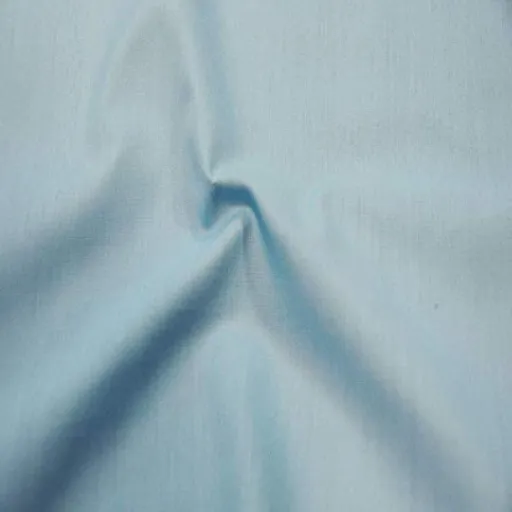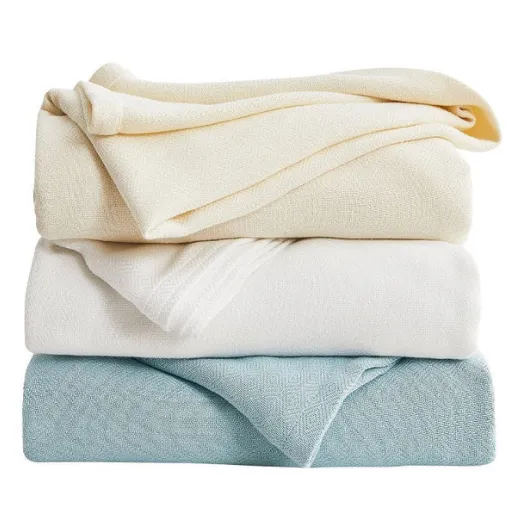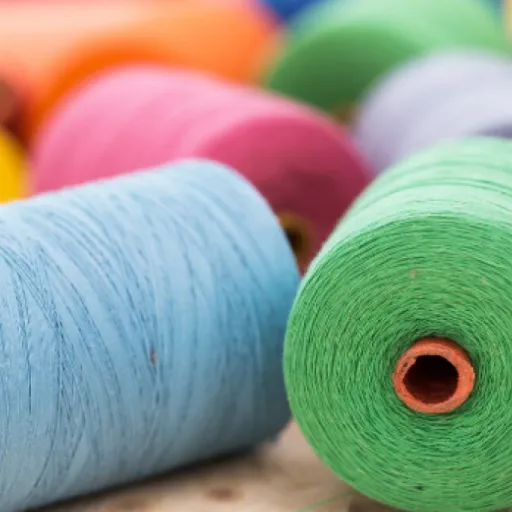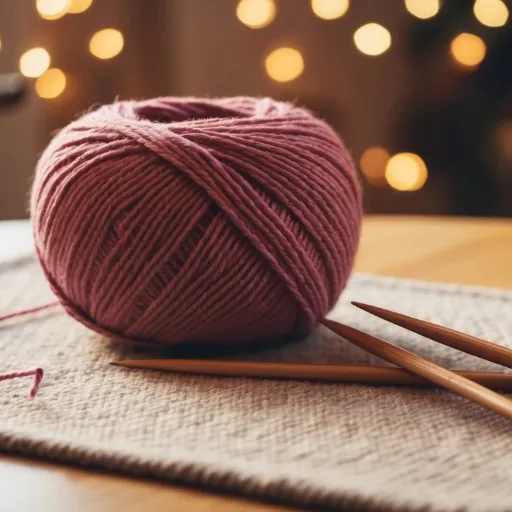Polyester is highly regarded and appreciated for its practicality, flexibility, cost-effectiveness, and numerous applications. With all these functions and attributes still comes pilling, which ruins its overall appearance. It is a common sight to see a particularly loved and cherished polyester blouse or blanket become pilled, thus looking ragged. The main question is why pilling occurs in the first place. Is there a way to prevent it from happening? If it does, are there any ways to remove the pilling? This blog will delve deeper into why polyester fabric tends to pilling, what we can do to prevent it from happening, and how to remove the pilling once it occurs on polyester fabric.
The Science Behind Polyester Pilling
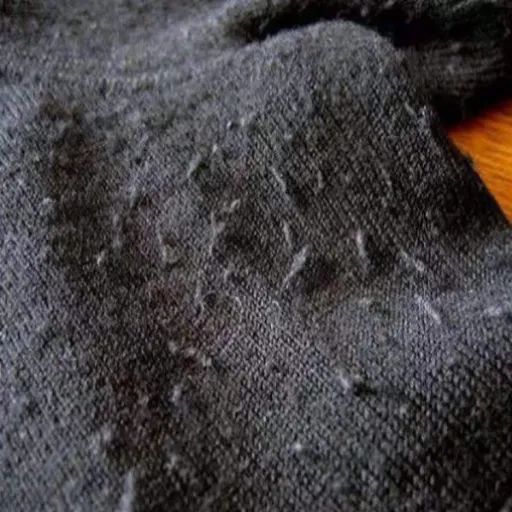
Polyester fabrics tend to form small nodules on their surfaces, a phenomenon known as pilling. This occurs when the fibers loosen and intertwine, causing the fabric to wear down in certain areas. Polyester materials are commonly used in various types of clothing due to their strong resilience to breakage; however, they often cause pilling. Pilling isn’t a significant issue when it comes to a fabric’s utility, but it does contribute to wear and tear and the overall aesthetics of the fabric.
What Causes Pilling?
Synthetic pilling fabric occurs when the fabric’s fibers encounter resistance and pressure, causing them to become loose and then tangle. This is a synthetic garment commonly made from fabrics such as polyester, acrylic, and nylon, as the fibers are stronger and prone to forming pills. Blend materials made from natural fibers, such as wool and cotton, which also tend to pill because their fibers typically shed, thereby reducing the pilling effect. The probability of pilling increases with activities such as washing clothes and sweating, abrasion-treatment, and wearing them repeatedly, so they rub against rough surfaces. Newer wear excellence and treatment solutions are under development to curtail these struggles of pilling, which, for now, nibble at the garments using pill removers.
How Pilling Happens
Pilling occurs when a fabric’s fibers are weakened and bunch together in small tufts or balls, typically caused by friction or abrasion. Fabrics with shorter, weaker fibers, as well as natural and synthetic blends with varying wear rates, are susceptible to this issue. According to recent findings, pilling is accelerated by frequent washing and drying of textiles, and is particularly unwarranted in high heat or in machines that are not correctly filled. To mitigate such issues, it is recommended to follow laundering rules, turn garments inside out to prevent abrasion, refrain from using fabric softeners, which can cause further fiber exhaustion, and use soft fabric shearing tools. Solutions such as enzyme treatments for production and tools for shearing the fabric are essential in preventing pilling.
Common Causes of Polyester Pilling

Friction and Wear
When specific fabrics, such as polyester, rub, pilling occurs due to broken fibers gathering into small balls. This issue is particularly pronounced near the armpits, elbows, and seats of a garment.
Low-Quality Fibers
Pilling occurs more frequently with polyester material that has been blended with fabric that has little to no durability, as the fibers are more prone to tearing and snapping.
Improper Washing
Pilling is directly related to washing a garment using an aggressive cycle or washing it with fabrics that are rougher in nature.
Heat and Overdrying
Fabrics with short fibers (e.g., polyester) are particularly prone to pilling, as they snap and tear at a higher rate when exposed to high heat and washing temperatures.
Everyday Wear and Tear
Friction is the most frequent cause of fabric pilling. This is especially true in areas that receive the most wear, such as clothing sleeves, collars, and the inner thighs of pants, where increased friction is often experienced. Every movement causes the garment to stretch; as a result, its fabric gets further worn out, and fabric fibers fall out, leading to the formation of pills. Requests for how to reduce clothing wear and tear through the adoption of gentle care and higher-grade cloth, as well as avoidance of rough abrasion, are a trending concern according to global data on search-related matters.
Fabric Quality
Each time a visitor performs a search, thousands of websites compete for rankings on the search engine’s results pages. A vast majority of users consider natural fibers like silk, wool, and cotton, as they are comfortable to wear, retain warmth, and exhibit natural elasticity. Tight-knit fabrics do not deteriorate as much over time due to the increased wear and tear a piece of clothing may face. Caring for such textiles in the right way, ensuring they are correctly maintained, and investing as required, particularly with mercerized cotton and wool that undergoes anti-pilling processing, significantly improves the retention and presentation of clothes. Ultimately, investing in high-quality fabrics and understanding their care requirements can dramatically reduce the impact of frequent wear and extend the life of garments.
Improper Care
At its worst, poor care can rip apart your garments. Dangers include using incorrect temperatures when washing and harsh chemicals instead of sticking to the appropriate care instructions. An example is washing silk with cold water to avoid shrinkage and strengthen wool. Similarly, when one buys new and cute clothes, they expect the washing machine to function correctly. Unfortunately, overloading the washing machine lessens the washing capabilities of any machine as well as fabric wear, which is the start of pilling and tearing. The gentle cycle, by now, reduces stress, ensuring that the machine and fabric can operate at their optimal efficiency. Textiles appear to be in the best condition when cared for respectfully, which is typically applied to frequently worn items such as blouses and pants when washing them in the machine.
How Pilling Affects Different Types of Polyester Garments
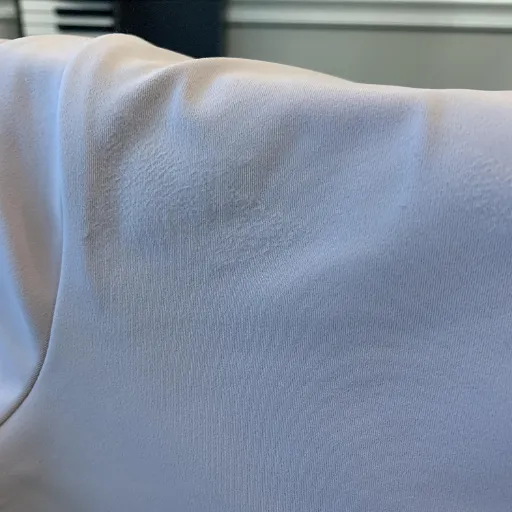
At the same time, it is essential to be aware that a polyester blend in a classic, tightly woven shirt or suit will still not be as easily damaged by pilling as a light knit intended for activewear. The continuous rubbing and frequent washing we all encounter are sure to trigger pilling, even on the garments mentioned earlier. Garments with blends of fibers other than polyester are likely to have a high susceptibility to pilling. Special care during the washing process, such as gentle washing or avoiding abrasive washing, ensures that the garment is effectively maintained and its shape preserved.
Activewear
The customer seeking activewear is most interested in the outfit’s longevity. Highly informed consumers are seeking information on the proper care and maintenance to increase the lifespan of activewear.
Speaking of activewear, it is essential to care for the material and follow a proper care routine. Activewear designed with sound quality usually features a blend of spandex, polyester, or nylon, offering superb stretch, moisture-wicking properties, and extended lifespan. Such materials are prone to improper washing and tend to wear out faster. However, to extend the lifespan of your activewear, ensure you follow the steps to slow down the aging process:
- • Wash on a gentle cycle in cold water to minimize abrasion
- • Avoid using fabric softeners to maintain elasticity
- • Always air dry the fabric to retain its fiber quality
- • Make changes to clothing and shoe fastening to eliminate Velcro use and minimize direct abrasion
Everyday Clothing
Polyester is a preferred choice for everyday wear due to its low cost, long-lasting durability, and resistance to shrinking. But what most people might overlook is that polyester, while being resistant to stretching and shrinking, still pills – those little fuzzballs you find on deteriorating teddy bears. Daily wear and frequent washing exacerbate the pilling, as the small balls of fuzz become quite noticeable to the wearer. The wash cycle on protective and preserving fabrics, which contains many chemicals, exacerbates the issue by washing off the protective layer faster than the naturally present mitigators. Therefore, avoiding the overuse and overloading of the washing cycles is an excellent solution for your fabric-related concerns. Thus, using a cold and delicate cycle and not overloading the washing machine with such clothes would help. It is recommended to use a fabric shaver or a specialized depiller available on the market, which allows the fabric to look less worn out.
Home Textiles
Pilling is actually the scientific term, although it is less commonly used than the term ‘polyester pilling,’ which implies that it refers solely to polyester fabrics. Pilling actually occurs in all fabrics. All fabrics can get pilled when the fibres start to loosen and tangle into small balls or pills on the surface. Pilling is more commonly triggered by “wear and tear”, such as rubbing or washing against other materials.
Quick Tips for Home Textiles:
- Use high-quality polyester blends to resist pilling
- Avoid high heat when drying and washing
- Launder items inside out
- Consider using a fabric shaver or depiller to remove pills gently
Practical Solutions to Prevent or Reduce Pilling
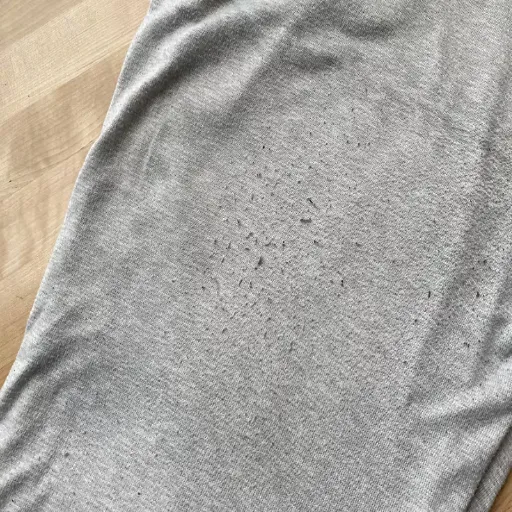
Prevention Tips
- Choose High-Quality Fabrics: Fabrics created with a tight weave, like those designated as pill-resistant, tend to pill less often.
- Turn Garments Inside-Out: Whenever earmarked for washing, all garments should be reversed to reduce the effect of friction and eliminate pilling.
- Use Gentle Wash Cycles: To prevent fabrics from rupturing, wash fabrics at gentle temperatures and keep them from crumbling by not filling the washer to full.
- Wash with Similar Textures: By grouping materials of the same roughness, you minimize interaction between the smoother and rougher materials, which reduces the chances of pilling.
- Air Dry When Possible: The dryer should be avoided entirely or, at the very least, used at low heat, as superior tumbling and heat usage are factors that accelerate the pilling of clothes.
- Use a Fabric Shaver for Maintenance: To keep velvet textures unharmed, all you need is a pill removal tool, which can safely shave off pills.
Purchasing garments made from high-quality fabrics, including tightly woven fibers, can significantly reduce or eliminate the need to remove pills. Always choose a gentle cycle, as well as cool water, when washing clothes to minimize pilling while protecting the clothing’s fibres. Clothes should be turned inside out to protect the fibers further. Consider buying liquid washing products instead of powdered ones, as they may be less irritating. Remember to wash clothes in separate loads; heavily textured clothing should be washed separately, and delicates should be washed in their own loads. With these tips, you will be able to keep your clothes for a longer time without needing special maintenance, and it would be nice to have all the clothes to wear, regardless of the season.
Products to Reduce Pilling
| Product | Description |
|---|---|
| Fabric Shavers | Quickly and correctly remove fabric pilling, leaving your clothing smooth and fresh. |
| Sweater Combs | A more low-tech solution to fabric pilling. Specially designed combs gently remove pills from any knitted items. |
| Pilling-Resistant Detergents | Use specialized detergents to prevent fabric pilling. They protect fabrics and control deformation during washing. |
| Laundry Bags | Gentle garments can be put in mesh washing bags. This way, the frictions these garments may be subjected to will be minimized. |
| Clothes Brushes | Used to keep fibers aligned and lint-free, therefore preventing the formation of a pill by wearing the item in question. |
Long-Term Care
To protect the quality of one’s clothes, it’s essential to adopt sustainable practices in the day-to-day care of one’s garments. According to Instagram trends and Google searches, it appears that people are seeking the latest ways to sustain their wardrobes and incorporate more eco-friendly elements. While storing one’s clothes in a cool, dry place to prevent fading and weakening is effective, there are other ways to extend the life of one’s garments. One such valuable approach is to adopt the “use one item for one day” method, which promotes even garment use and reduces undue strain on a set of clothes. The use of acid-free tissue paper also helps in delicate garments, for example. In short, with the right skills, you can ensure to follow a sustainable lifestyle with all your nice clothes in hand.
Expert Tips and Tricks

- Avoid Overwashing: Excessive washing can cause damage to clothes. Preserve with spot cleaning to lengthen the time between wash cycles.
- Wash With Care: To preserve fabric quality, use cold water and mild detergents. Always refer to the care labels to prevent damage from washing.
- Store Smartly: Structured garments benefit from hangers made of good material. Opt to fold knitwear so that it doesn’t stretch.
- Mend Early: Prevention is better than cure; seek to address small rips and unstitched seams immediately.
- Protect Your Clothes: Keep them fresh by using cedar blocks or lavender sachets to ward off moths.
From the Pros
Washing your clothes is more of an art than a science—it’s about the specifics, like the material of the garment. Additionally, your lifestyle and care trends all contribute to how many times a garment can be washed or worn. For example, denim can be worn and washed up to 3 to 5 times. Additionally, any slacks, t-shirts, or undergarments worn primarily for their intended purpose must be washed every time. Intimates, such as bras and other undergarments, are an exception since they can last a few wears and can be kept fresh longer with a bit more care. Critical is gym equipment and workout gear. The moisture and sweat on that gear, combined with dirt and bacteria, is an exception and must be washed and put to soak after every use. To ensure a correct strategy and instructions for washing any item, always check the tags and care instructions on the garment.
DIY Solutions
Step-by-Step DIY Pilling Removal:
- Spread the clothes on a flat surface
- Gently remove the fabric using either a razor or a fabric shaver
- Ensure you do not exert excessive pressure so that the fabric isn’t damaged
- When washing the garment, turn it inside out
- Switch to gentle mode to reduce wash friction
Reference Sources
Refer to these five professional and authoritative sources to verify the article’s accuracy regarding polyester pilling:
- Pilling Analysis: The Taylor & Francis Online platform provides an analysis of the elements that contribute to and stimulate pilling in polyester-cotton fabrics.
- Finite Element Modeling: Emerald Insight examines the mechanisms of pilling in polyester woven fabrics using advanced modeling techniques.
- Anti-Pilling Properties: Journal of Textile and Apparel discusses how cold plasma treatments can enhance the resistance of polyester-cotton blends to pilling.
- Laser Ablation Effects: MDPI presents results on modifications to mechanical properties resulting from laser ablation.
- Image-Analysis Techniques: Taylor & Francis Online documents triggers and solutions for pilling detected on polyester fabrics using modern image analysis techniques.
Frequently Asked Questions (FAQs)
Pilling refers to the formation of small fabric pills on the surface of the fabric, often caused by the rubbing of fibers. Polyester, being a synthetic fiber, is known for its durability but can still be susceptible to pilling, particularly in areas that experience frequent friction.
The causes of fabric pilling on polyester clothing include the fabric’s structure and the nature of polyester fibers. Rubbing against other fabrics, wear and tear, and the composition of the fabric can contribute to pilling. Clothes made from synthetic fibers like polyester may pill more than others, especially if they are not blended with more resistant materials.
To prevent pilling on clothes, it is essential to follow proper fabric care. Washing clothes inside out, using a gentle cycle, and avoiding fabric softeners can help minimize the risk of pilling. Additionally, keeping polyester garments away from rough surfaces can also reduce the likelihood of pilling.
Fabrics like cotton and some finely woven wool are generally less prone to pilling compared to synthetic fibers. Blends that include natural fibers can also offer a lower pilling potential while retaining durability and comfort.
To remove pilling from polyester, you can use a fabric shaver or a lint roller. Gently running the fabric shaver over the surface of the fabric can effectively remove pilling without damaging the garment. For minor pilling, simply pulling the pills off by hand can also work.
While it may be impossible to avoid pilling altogether, you can learn how to prevent and reduce pilling by selecting fabrics that are resistant to pilling and practicing good fabric care. Washing clothes less frequently and storing them properly can also contribute to the longevity of the fabric.
The fabric weave plays a significant role in the pilling tendency of a garment. Tightly woven fabrics tend to be more resistant to pilling compared to loosely knit fabrics, which are more likely to pill due to their structure and the way fibers are interlaced.
A pilling test can be conducted to assess a fabric’s resistance to pilling. This test typically involves rubbing the fabric against itself or another material to observe the degree of pilling that occurs. Fabrics that exhibit minimal pilling after the test are considered more durable and resistant to pilling.












